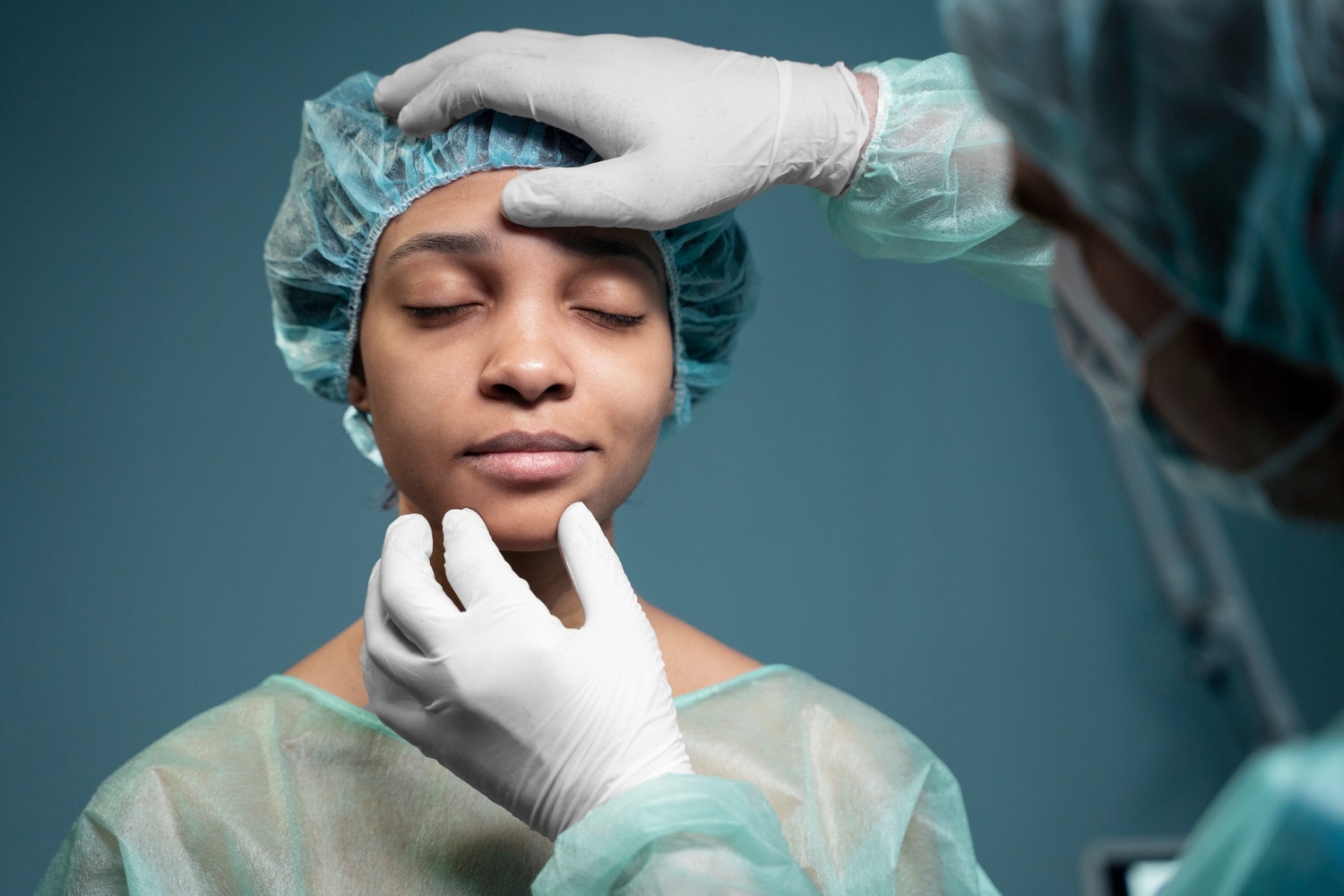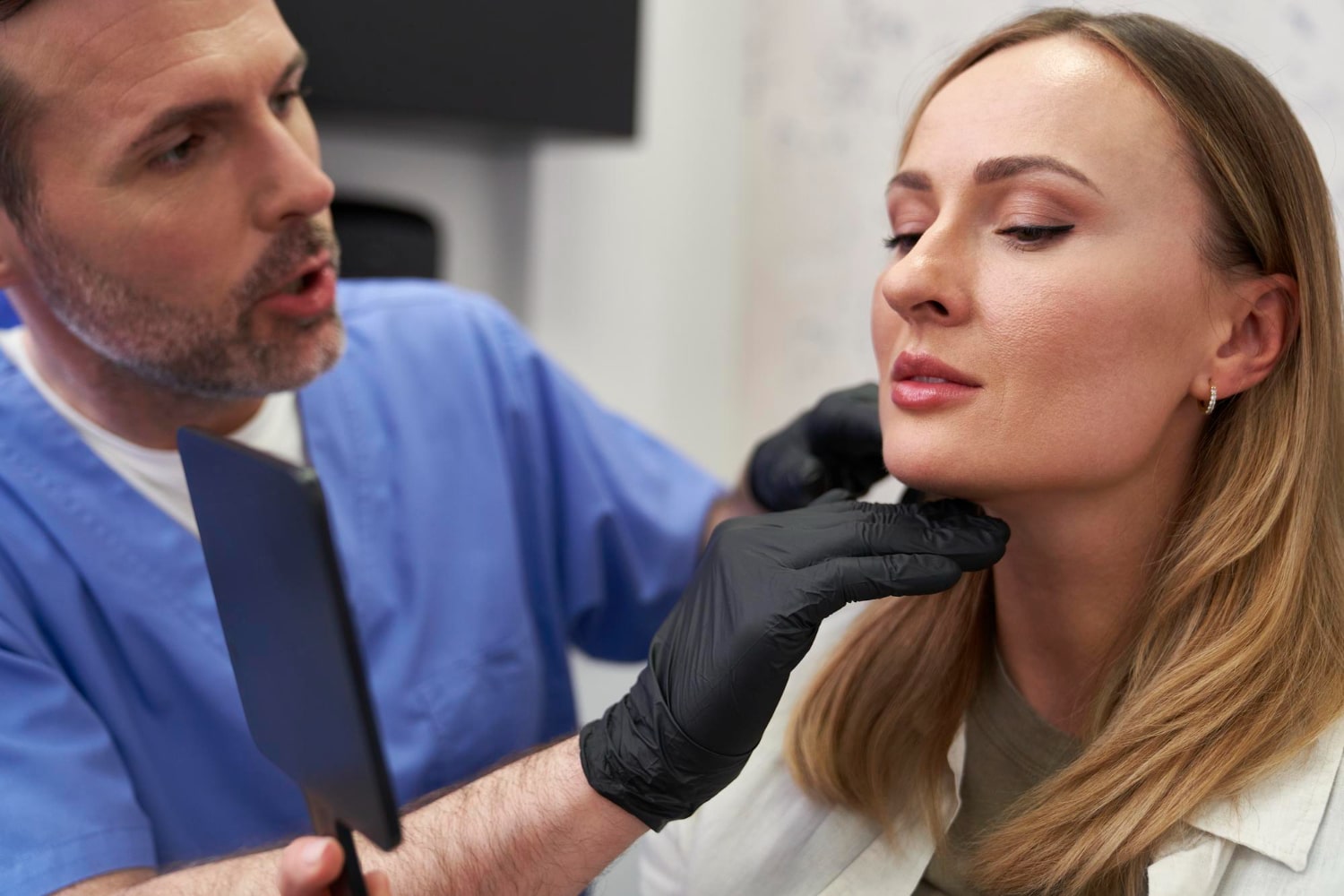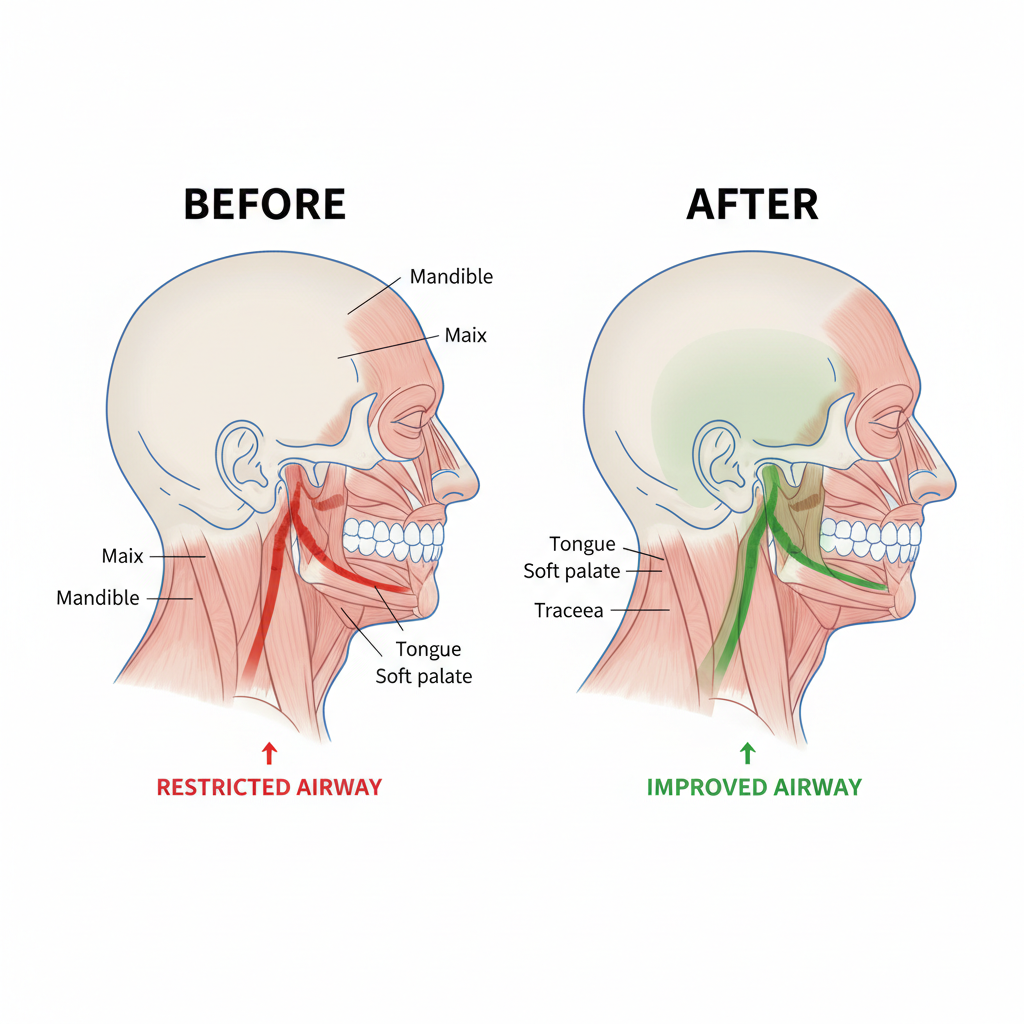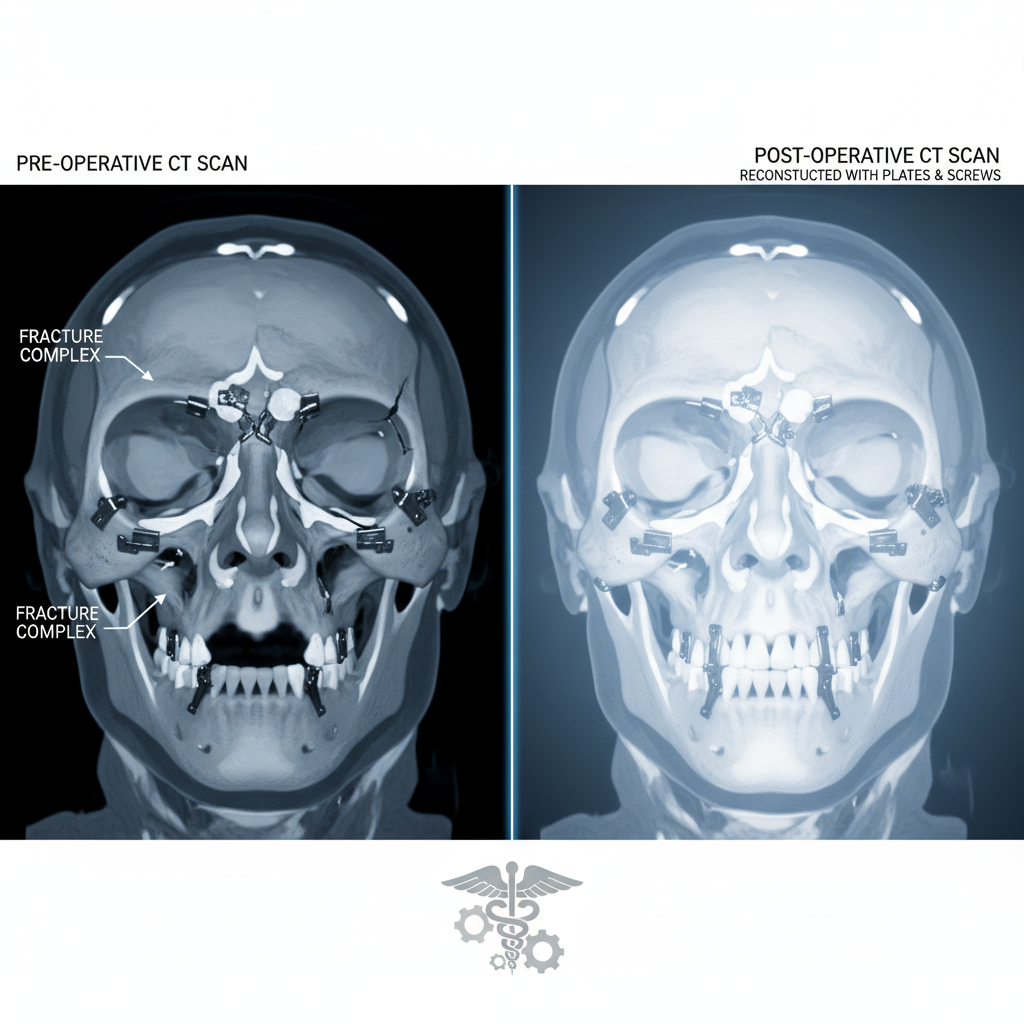Are you struggling with jaw issues and considering surgery to find relief? Understanding the difference between jaw surgery and jaw revision surgery is crucial in making an informed decision. In this article, we will explore common medical conditions that might require surgical intervention and delve into the specifics of these two procedures.
When it comes to jaw surgery, it is typically performed to correct skeletal or dental irregularities. This can range from misaligned jaws to issues with the temporomandibular joint (TMJ). On the other hand, jaw revision surgery is often performed to address complications or unsatisfactory results from a previous jaw surgery.
By gaining a deeper understanding of these medical conditions and the surgical options available, you can make an educated choice that aligns with your specific needs and objectives. Whether you are looking to improve your bite, alleviate pain, or enhance your facial aesthetics, knowing the difference between these procedures is essential.
Join us as we dive into the world of jaw surgery and jaw revision surgery, demystifying these medical interventions and providing you with the knowledge you need to make an informed decision about your oral health.
Understanding the Differences between Jaw Surgery and Jaw Revision Surgery
Jaw surgery, also known as orthognathic surgery, is typically performed to correct skeletal or dental irregularities that contribute to functional or aesthetic concerns. This type of surgery involves repositioning the jaws to improve alignment, bite function, and facial harmony. Common reasons for jaw surgery include correcting underbites or overbites, addressing open bites, realigning the jaws to resolve breathing issues, and enhancing the overall facial profile. The goal of jaw surgery is to achieve a balanced and functional occlusion, allowing for proper chewing, speaking, and facial symmetry.
On the other hand, jaw revision surgery is a secondary surgical procedure performed to address complications, suboptimal results, or new issues that arise following a previous jaw surgery. These complications may include relapse of jaw misalignment, asymmetry in jaw positioning, persistent pain or discomfort, or aesthetic concerns that were not adequately addressed in the initial surgery. Jaw revision surgery aims to correct these issues and optimize the outcomes of the initial procedure, restoring proper jaw function and appearance.
While both jaw surgery and jaw revision surgery involve surgical manipulation of the jaw bones, the specific goals and challenges associated with each procedure differ. Understanding these distinctions is essential for individuals considering surgical intervention for their jaw concerns, as it can help set realistic expectations and ensure that the chosen treatment aligns with their desired outcomes.
Benefits and Risks of Jaw Surgery
Jaw surgery offers a range of potential benefits for individuals with significant jaw abnormalities or functional issues. By correcting misaligned jaws, improving the occlusion, and enhancing facial aesthetics, jaw surgery can lead to improved chewing efficiency, speech clarity, and overall quality of life. Additionally, addressing underlying skeletal or dental irregularities through surgery can prevent future dental problems, reduce the risk of temporomandibular joint disorders, and alleviate associated pain and discomfort.
However, like any surgical procedure, jaw surgery also carries certain risks and considerations that patients should be aware of. These risks may include potential complications such as infection, bleeding, nerve damage leading to numbness or altered sensation in the face, post-operative swelling and discomfort, and the need for extended recovery time. It is essential for individuals undergoing jaw surgery to discuss these risks with their surgical team and follow post-operative care instructions diligently to minimize the likelihood of complications.
Despite the potential risks, the benefits of jaw surgery in improving oral function, enhancing facial aesthetics, and resolving long-standing jaw issues often outweigh the associated risks. By working closely with a skilled surgical team and following a comprehensive treatment plan, patients can achieve successful outcomes and enjoy the long-term benefits of jaw surgery.

Benefits and Risks of Jaw Revision Surgery
Jaw revision surgery serves a distinct purpose in addressing complications or unsatisfactory outcomes from a previous jaw surgery. By undergoing a revision procedure, individuals can correct issues that may have persisted or developed following the initial surgery, such as jaw relapse, asymmetry, functional impairment, or aesthetic concerns. The primary benefit of jaw revision surgery is the opportunity to achieve the desired results that may not have been fully realized in the initial procedure.
However, jaw revision surgery also comes with its own set of risks and considerations. Patients undergoing revision surgery may face increased complexity due to the altered anatomy resulting from the previous surgery, as well as the potential for scar tissue, bone healing issues, and prolonged recovery time. It is essential for individuals considering jaw revision surgery to have realistic expectations about the outcomes and be prepared for the challenges that may arise during the revision process.
Despite the potential risks involved, jaw revision surgery can offer significant benefits in terms of improving jaw function, correcting aesthetic concerns, and restoring symmetry and balance to the facial profile. By working with a skilled surgical team experienced in revision procedures, patients can address lingering issues from previous surgeries and achieve the desired outcomes for their oral health and overall well-being.
Preparing for Jaw Surgery or Jaw Revision Surgery
Prior to undergoing jaw surgery or jaw revision surgery, individuals will need to engage in thorough pre-operative preparation to ensure a smooth and successful surgical experience. This preparation typically involves a series of consultations with the surgical team, including the oral and maxillofacial surgeon, orthodontist, and other healthcare providers involved in the treatment plan. During these consultations, the surgical team will conduct a comprehensive evaluation of the individual’s oral health, jaw condition, and treatment objectives.
In addition to the initial consultations, pre-operative preparation for jaw surgery may include undergoing diagnostic imaging tests such as X-rays, CT scans, or 3D imaging to assess the jaw structure and plan the surgical approach. Patients may also be required to undergo orthodontic treatment to align the teeth and facilitate the surgical procedure. Pre-operative instructions will typically involve guidelines for fasting before surgery, discontinuing certain medications that may interfere with the procedure, and preparing the home environment for post-operative recovery.
For individuals considering jaw revision surgery, pre-operative preparation may involve a more detailed assessment of the complications or issues resulting from the previous surgery, as well as the development of a tailored surgical plan to address these concerns. The surgical team will review the patient’s medical history, previous surgical records, and imaging studies to determine the most appropriate approach for the revision procedure. Pre-operative consultations are essential for establishing clear communication between the patient and the surgical team and ensuring that expectations are aligned.
The Procedure for Jaw Surgery and Jaw Revision Surgery
The surgical procedures for jaw surgery and jaw revision surgery are complex and require a high level of expertise and precision on the part of the surgical team. Jaw surgery typically involves repositioning the upper jaw (maxilla), lower jaw (mandible), or both to achieve the desired alignment and occlusion. The surgery is performed under general anesthesia in a hospital setting, and the duration of the procedure may vary depending on the complexity of the case.
During jaw surgery, the oral and maxillofacial surgeon will make precise incisions in the jaw bones to access the underlying structures and reposition them according to the surgical plan. Bone grafts or orthognathic hardware such as plates and screws may be used to stabilize the repositioned jaws and promote proper healing. Following the surgery, patients will be closely monitored in the recovery room before being transferred to a hospital room for further observation and post-operative care.
In the case of jaw revision surgery, the procedure may involve addressing specific complications from the initial surgery, such as correcting bone positioning, revising soft tissue contours, or adjusting orthodontic hardware. Revision surgery requires a thorough understanding of the previous surgical approach and the ability to navigate any altered anatomy resulting from the prior procedure. The surgical team will work diligently to address the identified issues and optimize the outcomes of the revision surgery.

Recovery and Post-Operative Care for Jaw Surgery and Jaw Revision Surgery
The recovery process following jaw surgery or jaw revision surgery is a crucial phase in the overall treatment journey and requires diligent adherence to post-operative care instructions. Patients can expect to experience some degree of swelling, discomfort, and restricted jaw function in the initial days and weeks following surgery. Pain management medications, cold compresses, and soft diet recommendations can help alleviate these symptoms and promote healing.
It is essential for individuals undergoing jaw surgery to follow a structured post-operative care plan, which may include attending follow-up appointments with the surgical team, adhering to dietary restrictions, practicing proper oral hygiene, and gradually reintroducing normal activities as directed by the healthcare providers. Orthodontic adjustments may be necessary to fine-tune the occlusion and ensure optimal alignment of the teeth following jaw surgery.
Similarly, patients undergoing jaw revision surgery will need to commit to a comprehensive post-operative care regimen to support the healing process and optimize the results of the revision procedure. Close monitoring by the surgical team, adherence to medication schedules, and regular follow-up visits will be essential in tracking the progress of the revision surgery and addressing any concerns that may arise during the recovery period. Patients should communicate openly with their healthcare providers about any symptoms or issues they experience post-operatively.
Potential Complications and Long-Term Effects of Jaw Surgery and Jaw Revision Surgery
While jaw surgery and jaw revision surgery are generally safe and effective procedures, they are not without risks of potential complications or long-term effects. Complications that may arise from jaw surgery include infection at the surgical site, nerve damage leading to altered sensation in the face, malocclusion due to improper healing, or relapse of jaw misalignment. Long-term effects of jaw surgery may include changes in facial sensation, altered speech patterns, or the need for additional orthodontic treatment to maintain the results.
In the case of jaw revision surgery, potential complications may include prolonged healing time, persistent asymmetry or aesthetic concerns, or the need for further revision procedures to address ongoing issues. Long-term effects of jaw revision surgery may involve the development of scar tissue, altered bone healing patterns, or changes in jaw function that require ongoing monitoring and management. It is essential for individuals undergoing jaw revision surgery to have realistic expectations about the potential outcomes and be prepared for the possibility of additional interventions.
By working closely with their surgical team and following post-operative care instructions diligently, patients can minimize the likelihood of complications and achieve successful outcomes from jaw surgery or jaw revision surgery. Regular follow-up visits with the oral and maxillofacial surgeon and orthodontist will allow for ongoing monitoring of the surgical outcomes and adjustments to the treatment plan as needed to ensure optimal oral health and function.

Conclusion and Final Thoughts on Jaw Surgery and Jaw Revision Surgery
In conclusion, jaw surgery and jaw revision surgery are valuable treatment options for individuals dealing with significant jaw abnormalities, functional issues, or complications from prior surgeries. By understanding the differences between these procedures, including their benefits, risks, and potential outcomes, patients can make informed decisions about their oral health and treatment goals. Consultation with a skilled oral and maxillofacial surgeon is essential in determining the most appropriate course of action and developing a personalized treatment plan.
Whether you are considering jaw surgery to correct misaligned jaws or seeking jaw revision surgery to address unsatisfactory results from a previous procedure, it is important to approach these treatments with realistic expectations and a commitment to post-operative care. By actively participating in your treatment journey and maintaining open communication with your surgical team, you can achieve successful outcomes and enjoy the long-term benefits of improved oral function, facial aesthetics, and overall well-being. Your journey to optimal jaw health starts with informed decision-making and a collaborative approach to surgical intervention.





